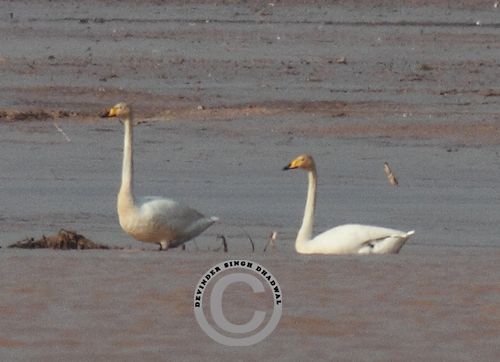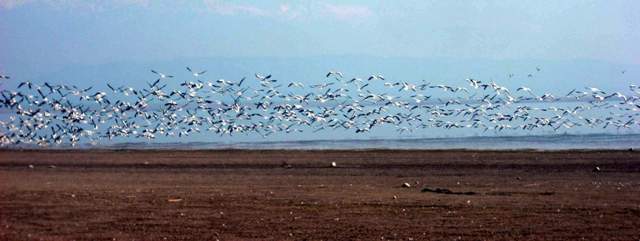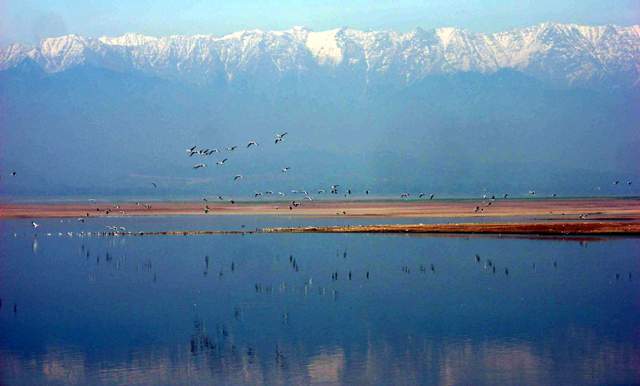Dharmshala: Ornithologists have estimated that the bird count at Pong Dam Wetlands in Himachal Pradesh have crossed the 100 thousand mark and with more birds still arriving, the final number could surpass last year’s 123 thousand.
Wild life warden DS Dadhwal said that the annual countdown of the birds in the wetland would be done from 28th to 30th January.
“The random census would be conducted in collaboration with Bombay Natural History Society (BNHS), Wild Life Institute of India (WII), Zoological Survey of India (ZSI), and the wild life department of Himachal Pradesh,” said Dadhwal.
Migratory birds crossing continents and flying over the mighty Himalayan ranges start arriving in the protected wetland from the last week of October and would continue to do so till end of February.

Ornithologists attribute the large influx of water birds to low water level in the Pong Lake exposing more wetland for feeding and roosting of the birds.
“At present there are more than 1 00,000 birds belonging to over 90 species that are roosting in the verdant forests around the wetland these days, claimed Dhadwal.

The warden put the number of migrant bar headed geese at 40,000 against about 34,000 recorded last year. Their numbers are steadily rising for in 2008 and 2009, the number was estimated at about 30,000 but in 2010, towards the end of the season, the high altitude migrant geese number at Pong was estimated to have touched 40,000.
The global population of the bar headed geese is estimated at about 120,000 and the large numbers spotted at Pong is perhaps the largest population anywhere in the world of these water birds in a non breeding season, claimed the wetland warden.
More of these birds are expected in the days ahead and they are sure to break the previous records, he added.
Other species that have landed in good numbers are the common pochard, pintail, ruddy shell ducks and Eurasian wigeon. The influx of waterfowls in the wetland crosses 120,000 every winter.
Till date more than 400 species of birds have been recorded from Pong. The latest addition to the list (418th) is also one of the rarest birds to be seen in the Indian Subcontinent:
On 29th January 2013, a pair of Whooper Swans was sighted and photographed.
Situated about 5o km from Dharamsala and 190 km from Chandigarh and nestled in the picturesque Kangra Valley of Himachal Pradesh, Pong is one of the largest manmade wetlands of northern India.

This huge wetland came into existence in 1974 after the construction of Pong Dam across the River Beas. Fed by waters from the Dhauladhar mountain range, the reservoir – also known as Maharana Pratap Sagar – forms a lake that is 42 km long and 19 km wide.
It has a catchment area of 12,500 sq Km. The area of the water body varies seasonally, ranging from about 125 sq Km, in summer to around 220 sq Km, in the monsoons.
Arvind Sharma is an award winning bi-lingual journalist with more than 20 years of experience.
He has worked with Divya Himachal, Dainik Jagran, Dainik Bhasker, Vir Partap, Ajit and PTI.
In 2010, he was conferred the Himachal Kesri journalism award. He reports on the Tibetan Government in Exile, politics, sports, tourism and other topics. He lives in Dharamshala.


